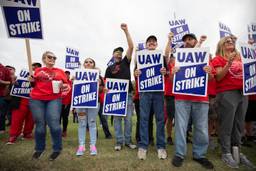On October 25, Cal/OSHA held its fourth meeting with adult film industry stakeholders about whether to revise the workplace bloodborne pathogens standard to explicitly stipulate what the law already requires: Condoms for porn sex.
Currently, all California employers must protect their workers from exposure to bloodborne pathogens on the job. For the adult film industry, that means condoms or equivalent protections. What counts as “equivalent protection” is subject to debate, however. This ambiguity creates a loophole that some activists are trying to close.
In 2009, the AIDS Health Care Foundation (AHF), a nonprofit public health group, petitioned the Occupational Safety and Health Standards Board to amend the standard to specifically address the practices in the adult film industry. Last month’s meeting was part of Cal/OSHA’s public consultation process to determine whether the rule should be revised.
Why is the AHF so adamant about spelling out a regulation that Cal/OSHA has consistently asserted and attempted to enforce for years?
The petition is one tactic in the AHF’s tireless and multifaceted campaign to keep the adult film industry’s shady occupational health and safety practices in the public eye and thereby pressure occupational and public health authorities into enforcing existing law. Over the years, the group has tried everything from lawsuits to costumed street protests to get the industry to clean up its act.
Despite the law, condoms are conspicuously absent from most straight porn produced in California. Cal/OSHA has successfully fined porn companies for violating the bloodborne pathogens standard, but the often opaque structure of the industry, limited resources and blatant defiance make proactive and consistent enforcement practically impossible.
Some producers explicitly ban condoms on set. Others claim that performers have the option to use condoms, but a Cal/OSHA official told the audience that she regularly hears from performers who want to use condoms on set but aren’t allowed to do so.
Getting more explicit could actually make enforcement easier. Len Welsh, the chief of the Division of Occupational Safety and Health at Cal/OSHA explained why.
If Cal/OSHA tries to enforce a very broad standard, like the general maxim that employers should protect their employees from exposure to pathogens, then companies have a lot more wiggle room when they appeal a citation.
Whereas, if the standard stipulates specific safeguards, such as condoms for intercourse, it’s trivially easy to prove that the rules were broken. The evidence is right there on tape. If the rules don’t explicitly say “condoms,” the company can always argue that it didn’t really violate the standard because it did something else that provides the same protection as a condom.
AHF lawyer Brian Chase stressed that his group only wants to clarify that condoms are required for vaginal and anal sex in porn. This stipulation should allay previously stated concerns by industry that AHF’s proposal, if adopted, would automatically require full barrier protections for lower-risk sex acts, such as condoms for oral sex or latex gloves for digital penetration. The general duty to protect workers from pathogens applies no matter what, but companies would have some leeway about how to go about protecting performers during lower-risk activities.
Chase said that his organization wants a simple “bright line” rule because the adult film industry is either not getting the message or deliberately flouting the law with impunity. He dismissed an industry counter-proposal to develop a comprehensive safety training curriculum for performers as a stalling tactic. What is needed, Walsh argued, is not more complicated rules, but an unequivocal message to the industry that the existing rules will be enforced.
[To be continued.]

I hope you found this article important. Before you leave, I want to ask you to consider supporting our work with a donation. In These Times needs readers like you to help sustain our mission. We don’t depend on—or want—corporate advertising or deep-pocketed billionaires to fund our journalism. We’re supported by you, the reader, so we can focus on covering the issues that matter most to the progressive movement without fear or compromise.
Our work isn’t hidden behind a paywall because of people like you who support our journalism. We want to keep it that way. If you value the work we do and the movements we cover, please consider donating to In These Times.






